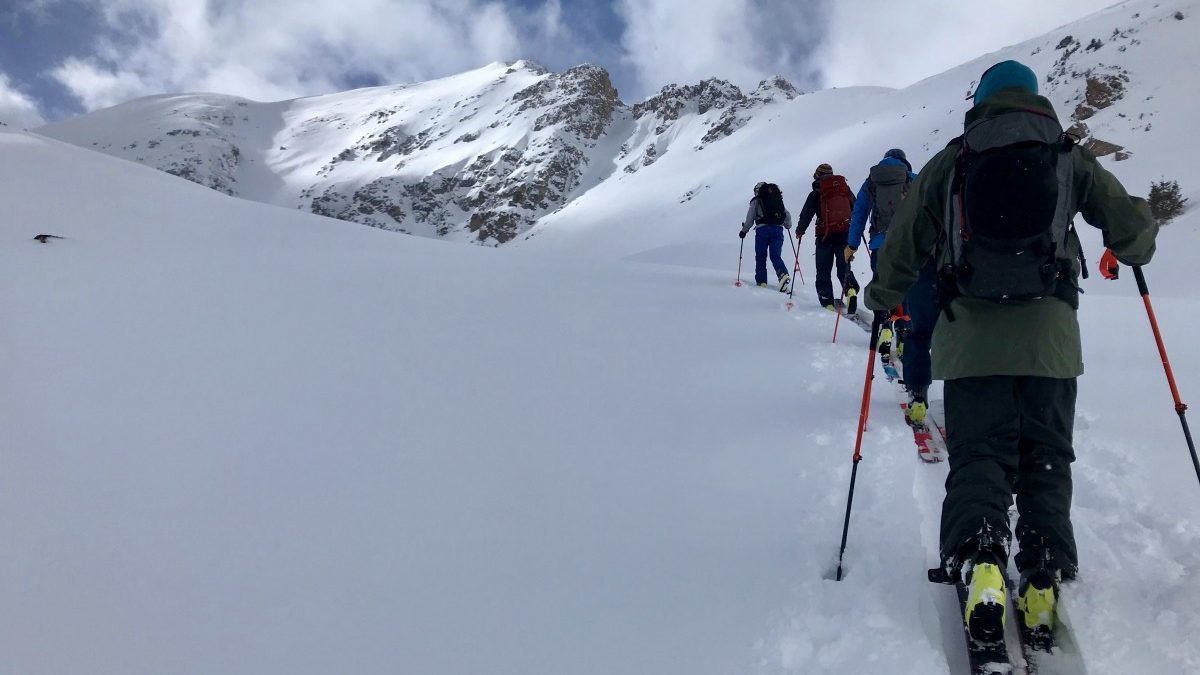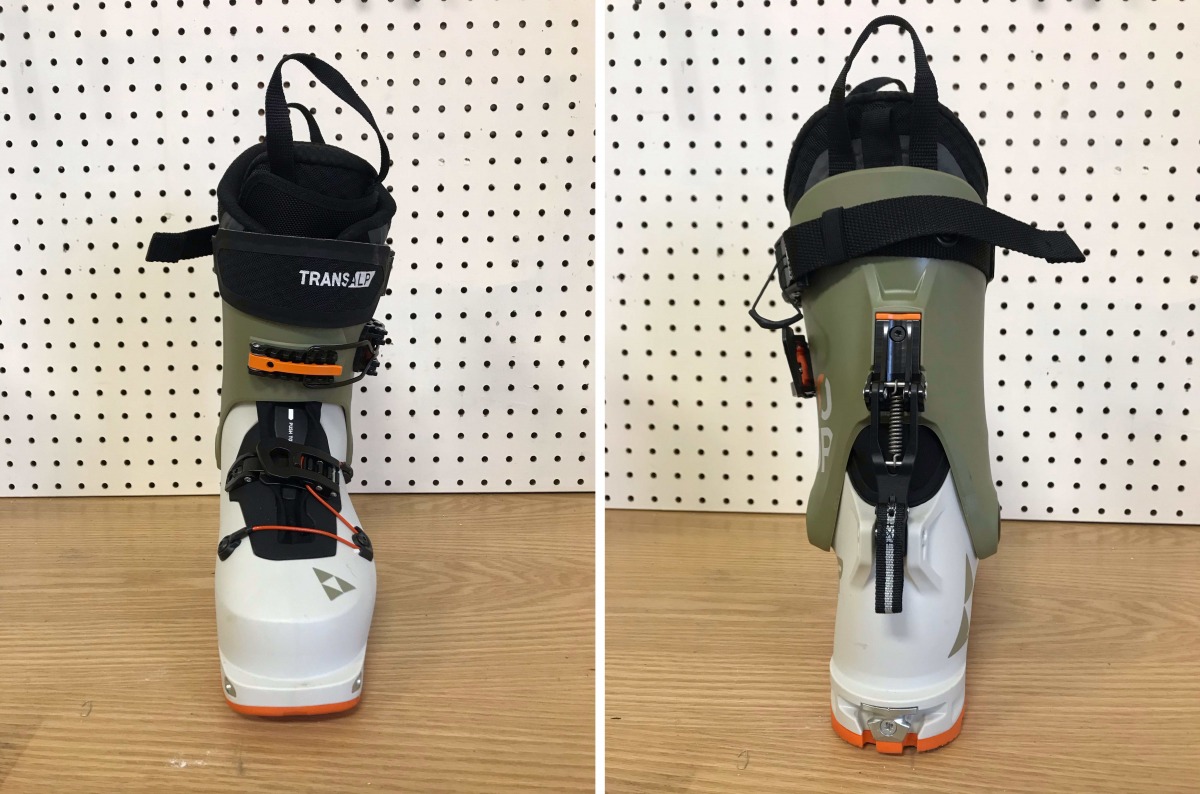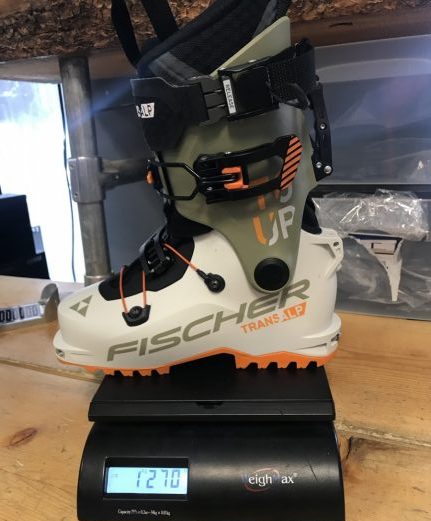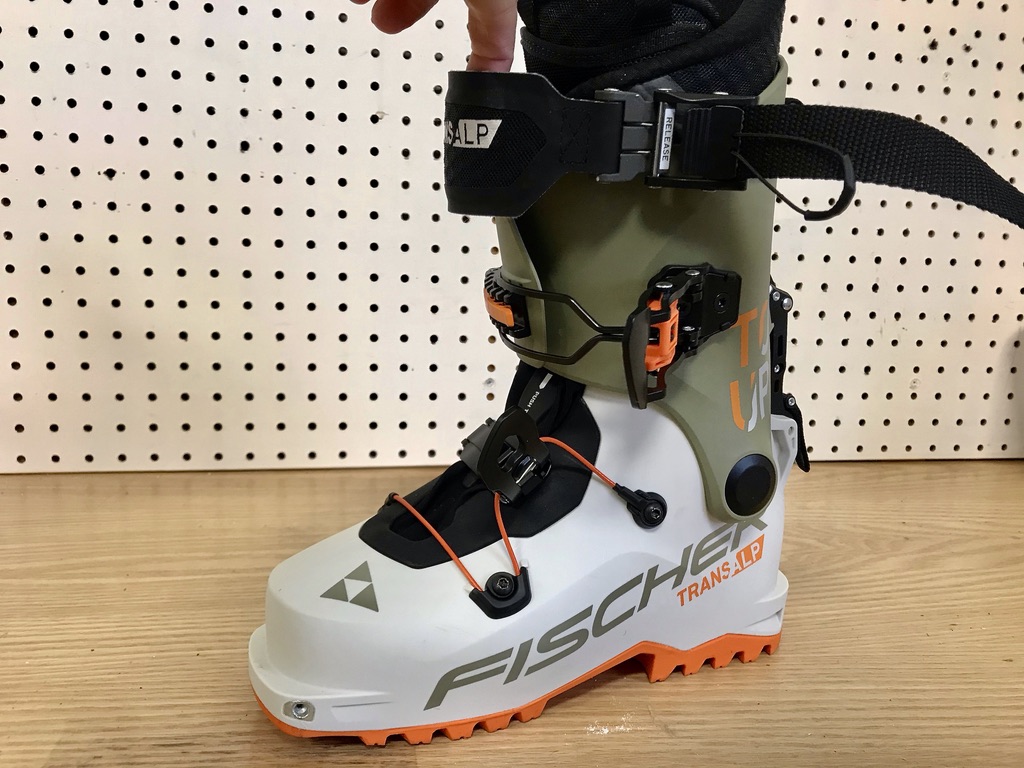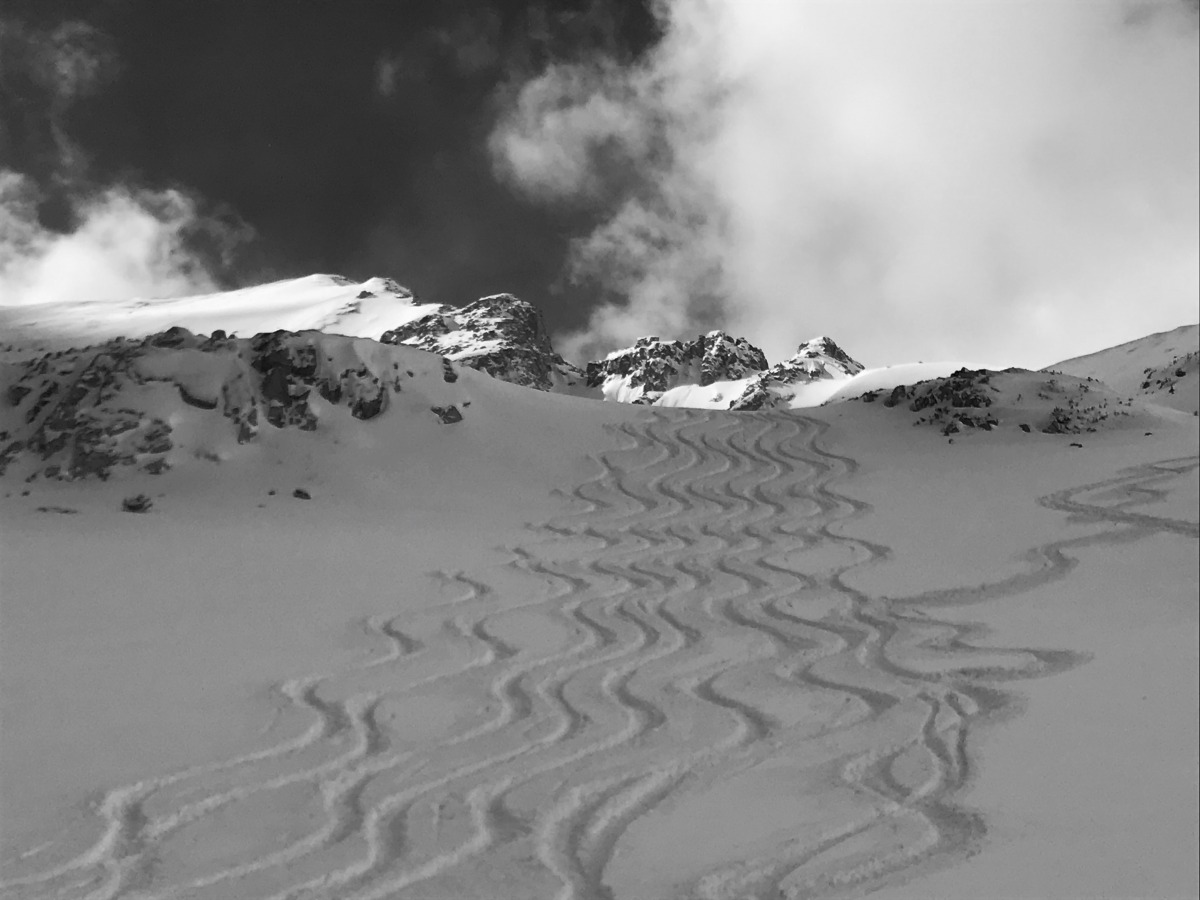Here’s a testament to the contemporary age of ski touring gear: one night last week, I imagined an ideal boot. This boot would be light enough for the long tours I mostly embark on, but more robust than the 1000g boots I typically wear. It’d have enough power to drive a 100mm underfoot ski without overpowering an 85 underfoot ski. It would walk exceptionally well, be comfortable enough for big days and be capable of enough power transfer to show up on demanding descents.
The next day, I got to try out that very boot. It seems the folks at Fischer had similar ambitions in thinking up the 2021-22 Fischer Transalp. It is light-ish (1280g for 26), stiff for its class (approximately 120 flex), powerful enough to drive a larger ski, compatible with a minimal tech binding or burlier hybrid like the Shift, and easy to transition between efficient walk mode and stiff, sturdy ski mode.
I first met the Transalp at a parking lot of the west side of Eisenhower Tunnel. My legs were wobbly from 2.5 hours of white knuckled driving in blowing and sloshing snow and I was happy to finally get out of the truck. At least the 24.5 women’s Tour model of the Transalp fit well, though it took some finagling to adjust the buckles as I shuffled into position on the skin track between skiing legend Mike Hattrup and a small handful of safely distanced media folk.
It was a day of low expectations for skiing. Our guide, Rocky Mountain Guides owner Peter Krainz kept reminding the group in his playful Austrian accent that really, we were just out for a walk. The tundra we approached was wind scoured, peppered with rocks and bushes, and had enough fresh swirling snow on top to turn the rocks into unwitting core shots. The most important thing was to see how the Transalp toured, he reminded us. Right, but we all secretly hoped for at least a few decent turns.
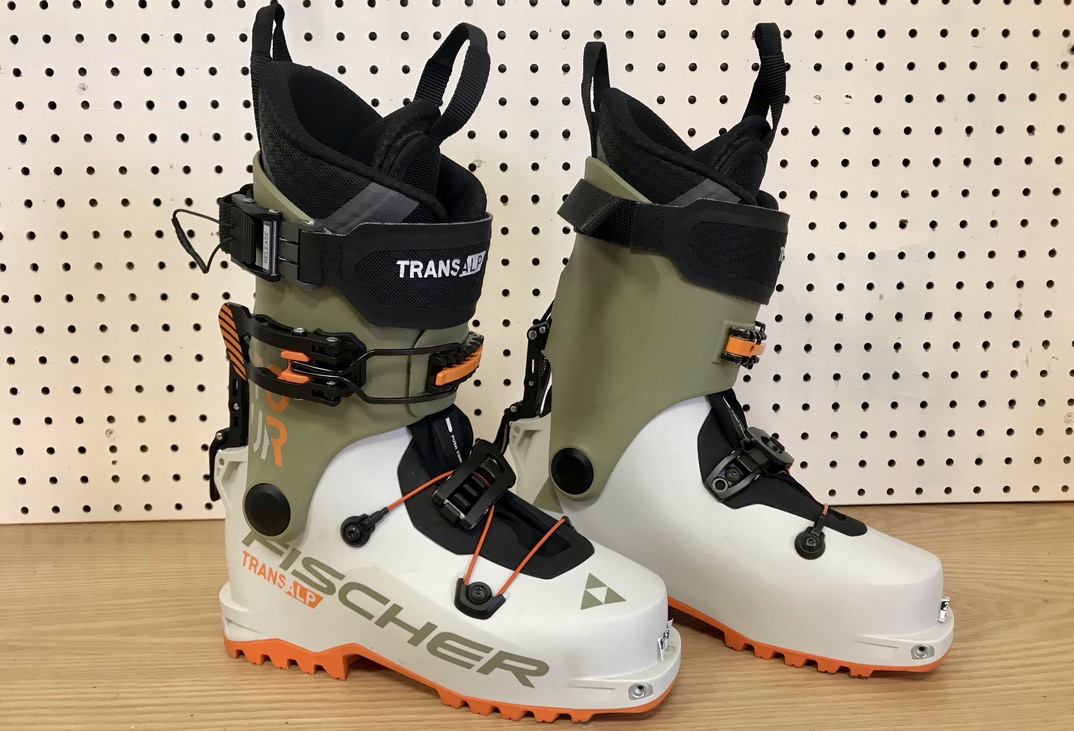
The 2021/22 Fischer TransAlp ski touring boot, the newest addition to the class of light mid-weight boots with a 50-50 focus on downhill and touring performance.
The Boot
The Transalp could be considered a goldilocks of boots. It definitely seems like that’s what Fischer was going for when they set out to innovate. As Hattrup tells it, he wanted to bridge the gap between the hard charging Ranger Free and the lighter, ski mountaineering and big mission oriented Travers. He wanted the quintessential in between that could fill in for either boot, but also proudly stand on its own as a better touring sibling to the former, and a harder charging sibling to the latter. (Sidenote: for those who recall the Transalp Vacuum TS, which was discontinued, the new Transalp is a full redesign.)
To do that Fischer, modeled the Transalp after the Travers, but much beefed up. The Transalp is a sleek shoe with two buckles and a power strap and a simple flip lever for walk/ski mode. The Pro model — the lightest and priciest — is comprised of PBax Rnew shell and cuff, for a stiff but progressive flex. Pebax Rnew mirrors many of the qualities that have turned lightweight boot makers on to Grilamid in recent years including similar weight to stiffness, and boot fitting and punching compliance. But it also has the advantage of increased durability and a performance feel more lively and responsive than Grilamid.

Left: front view. Note the Z buckle for even tightening across the forefoot as well as the button to depress the liner tongue. Right: the walk-ski lever is uncomplicated and easy to operate.
The powerstrap is static, reinforced with a camming buckle and quick release-pull for touring ease. The top buckle is light but sturdy and over the foot is the Z buckle quickly becoming standard issue in touring boots. It tightens evenly across the entire forefoot while saving weight. The boot also features a plush, fully featured Alpine Light liner with reinforcements, and a water proof half-gaiter that stops below the ankle. The gaiter provides extra warmth but also prevents moisture from getting to your liner. Above the forefoot, the shell has a narrow u-shaped cut-out, along with a little button to press the liner tongue into place (similar to how the Travers manages the liner with the Boa system). I’m not sure if Fischer intended this, but I found that cut-out to offer additional flex in walk mode, which was welcome and made me feel less like I was tromping around in a plastic boot.
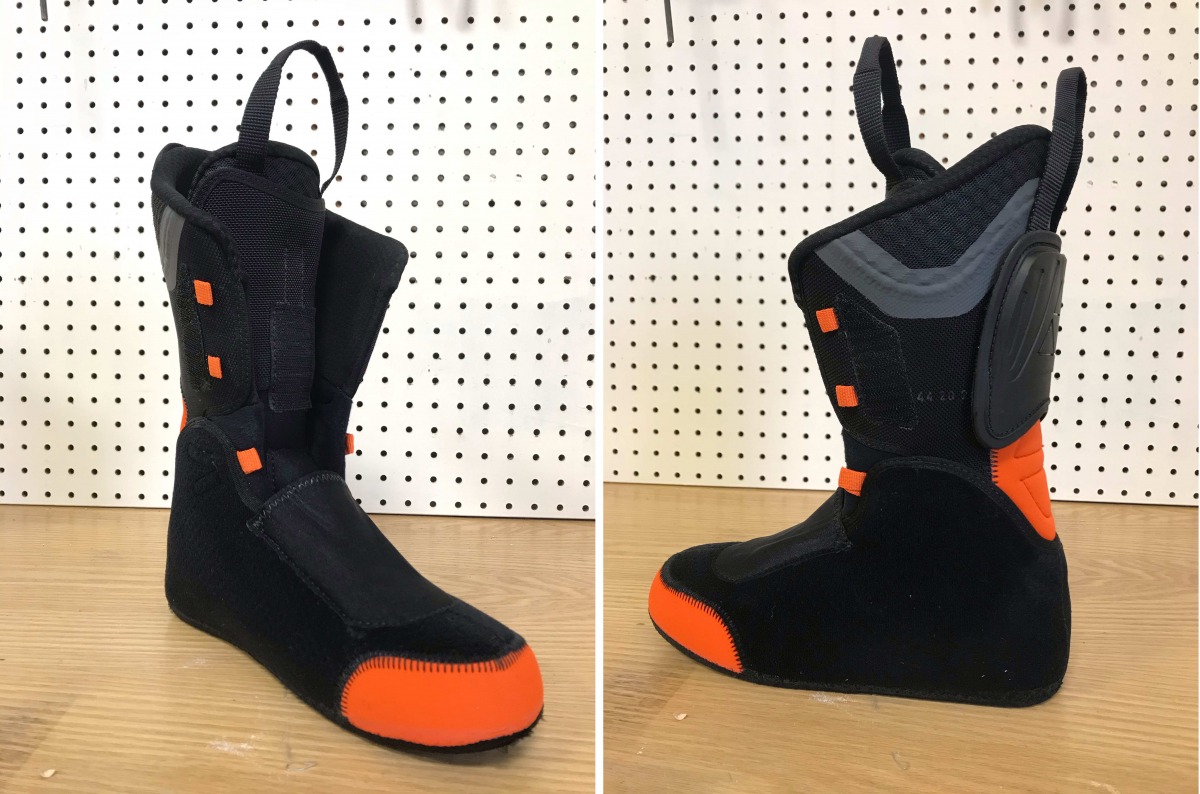
The substantial liner is reinforced in several zones. It also has velcro patches for the gaiter and optional spoiler.
Last of all, the Transalp has Dynafit certified tech fittings and a rubber sole compatible with the Salomon Shift, Fritschi Tecton and Marker Duke PT. You might be tempted to think the Transalp wants to be your every touring boot, and you might be right.
(Two other models are offered, the Tour and the TS, each of which steps down $100 in MSRP. The main difference is the use of TPU in the cuff and higher weight penalty. The women’s version, which I tried, is only available in the Tour version.)
Touring and skiing performance
So, how does it do in the field? In addition to the Eisenhower Tunnel tour, I’ve since taken the boots out on low angle powder runs here in the Roaring Fork Valley, and had one day of lift rides. I’ve found it walks well for a boot of that stiffness/weight stature. On the website, Fischer claims the range of motion is the same as the Fischer Travers — a whopping 80 degrees — but the liner is quite substantial. My guess is that the usable ROM is closer to 65 degrees, still competitive for this class of boot. The thick liner was cushy and decently comfortable for a straight out of the box fit. The last is listed at 100mm for a 26, though it’s slightly less for my women’s 24.5. I have since heat-molded the liners to create more space in the toe box but no other mods have been needed so far and the liners were easy to work with.
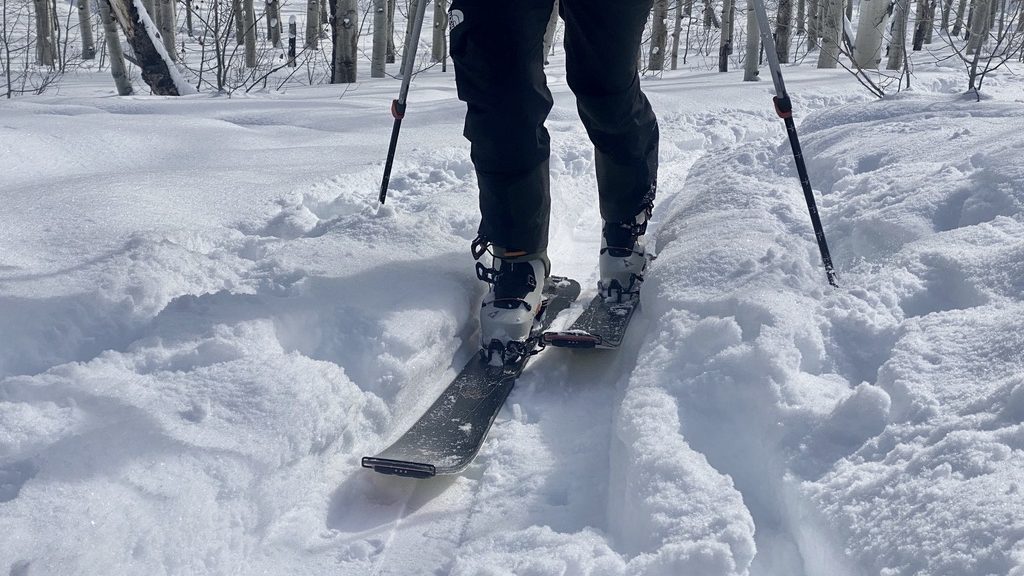
Cruising up some low angle aspen groves. The range of motion isnt quite the 80 degrees claimed by Fischer, but it is competitive for this class and weight of boot.
When it’s time to ski, transitions are a smooth and fluid flick of the two buckles and the spring-loaded walk-ski lever. Hattrup said he likes to loosen his power strap for walking and then give a quick tug to ski, but I didn’t find that necessary. I kept as tight as I would for skiing all day. I also found I could really ratchet down the top buckle without creating pressure points, likely due to the thick cushion, but also the way the buckle distributed pressure.
As for skiing, pickings were slim off of Eisenhower, but luckily skiing with a guide does bring a modicum of insurance for finding soft snow. Peter successfully led us to short filled-in patches between rockier bands. On the first run, I immediately noticed the boot’s overall sturdiness and the way it naturally prompted me to weight the middle of the ski. The lurking sharks kept us all to more conservative skiing, but when I did push the boot a little more I found it pleasantly responsive to more pressure. Finally on the last run, the sun did poke its shy head above the clouds and we got a quality powder run to cap off the day.
On subsequent days out, I notice two big differences between the Transalp and my lighter boots. One: The 16 degree forward lean (which can be increased with optional velcro spoiler) felt aggressive and steep for my geometry and attunement to more relaxed touring shoes. This can be decreased to 13 degrees by flipping around the spacer under the walk-ski lever. I’ll update thoughts on the forward lean once I spend some time in the more upright setting.
Two: With snugged-up buckles, these boots are stiff. So much so, I had to keep the top buckle on the loosest setting for the steep but soft bumps at Aspen Highlands. Some of this was probably due also to the aggressive forward lean (to be updated) but overall I found the downhill performance a significant step above the lighter boots; it will take some getting used to. Skiers accustomed to stiffer, more powerful boots will likely find this welcome.
Comparisons and concluding thoughts
A few comparisons: At 1280 grams for the 26 Pro model (1270g for the 24.5 W Tour I am testing), the Transalp rests in several in-betweens beyond its own Fischer family. Consider the Dynafit Pro Tour (1400g) and the TLT8 (1130g), and the Scarpa Maestrale RS (1450g) and the F1 LT (1020g). I found the Transalp more comfortable with a wider range of usable motion than the TLT8s, but certainly not as comfortable and easy to walk in as the F1 LT. Similarly, it skied notably stiffer than both the TLT8 and F1 LT. The downhill performance is comparable to Pro Tours I’ve demoed. (I haven’t skied the Maestrale — or Gea for that matter — so no comparo there yet but I’ve included for weight and category reference.)
For harder skiing tourers who want to lose a few grams off of the bigger midweight boots, the Transalp could be the boot for you. It checks the requisite boxes of relatively efficient uphill and stiff, powerful downhill without tallying too much mass on the scale. Stay tuned for a more in-depth review later this spring.
SPECS
Weight: Transalp Pro 1280g (26), Women’s Tour 1270g (24.5)
Sizes available: Pro 22.5 – 30.5, Women’s Tour 22.5 – 27.5
Flex: approximately 120
Last: 100mm
Material: Pro — Pebax Rnew shell and cuff, Tour — Pebax Rnew shell, TPU cuff
Forward Lean: 16 degrees
Sole: Full rubber w. standard tech inserts
Crampon compatibility: Automatic
Price: $850 (Pro), $750 (Tour, W Tour), $650 TS
Available to purchase Fall 2021.
Manasseh Franklin is a writer, editor and big fan of walking uphill. She has an MFA in creative nonfiction and environment and natural resources from the University of Wyoming and especially enjoys writing about glaciers. Find her other work in Alpinist, Adventure Journal, Rock and Ice, Aspen Sojourner, AFAR, Trail Runner and Western Confluence.

